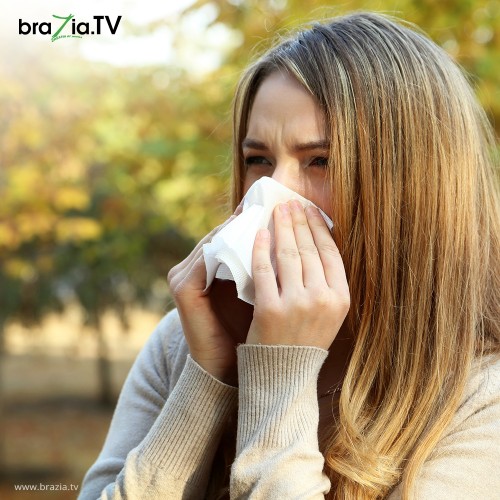Seasonal allergies, as other allergies, develop when the body's immune system gets to be sharpened and goes overboard with something in the environment that commonly causes no issue in the vast majority.
In another word: Allergic responses happen when the body wrongly shields itself against something that is not hazardous and dangerous.

In an event that you sneeze and cough, or your nose and eyes
tingle and are runny amid certain seasons of the year, you may have seasonal
allergies. Grass, pollen, and mold are the
most well-known triggers of seasonal allergies.
In many area/zones of the United States, spring allergies start in February and last until the early summer. Mild winter temperatures can make plants pollinate early. A stormy spring can likewise advance quick plant growth and development and lead to an expansion in the mold, making side effects last well into the fall.
While the planning and seriousness of a sensitivity season differ the nation over, the accompanying atmosphere considers likewise can impact how awful your indications may be:
Moving to another atmosphere to maintain a strategic distance from allergies is typically not fruitful; allergens are for all intents and purposes all over the place.
The most widely recognized guilty parties for fall allergies is ragweed, a plant that develops wild all over the place, however, particularly on the East Coast and in the Midwest. Ragweed blossoms and discharges dust from August to November. In numerous ranges of the nation, ragweed dust levels are highest in mid-September.
Different plants that trigger fall allergies include:
Seasonal allergy management and treatment
1. Know your triggers:
You may think you know that pollen is bringing about your suffering, yet different substances might be included also. More than 66% of spring sensitivity sufferers really have year-round side effects. An allergist can help you discover the source of your affliction and stop it, not simply treat the side effects.
2. Work with your allergist to devise systems to keep away from your triggers:
Your allergist may likewise prescribe one or more solutions to control side effects. The absolute most broadly suggested medications are accessible without a medicine (over the counter); others, including some nose drops, require a remedy.
In the event that you have a background marked by earlier seasonal issues, allergists prescribe beginning solutions to reduce indications two weeks before they are required to start.
A standout amongst the best approaches to treating seasonal allergies connected to dust is immunotherapy. These injections expose you over time to gradual increments of your allergen, so you learn to tolerate it rather than reacting with sneezing, a stuffy nose or itchy, watery eyes.
Seasonally related triggers
While the term "seasonal allergies" for the most part alludes to grass, pollen, and mold, there is there is a different group of allergy triggers that are closely tied to particular seasons. Among them: